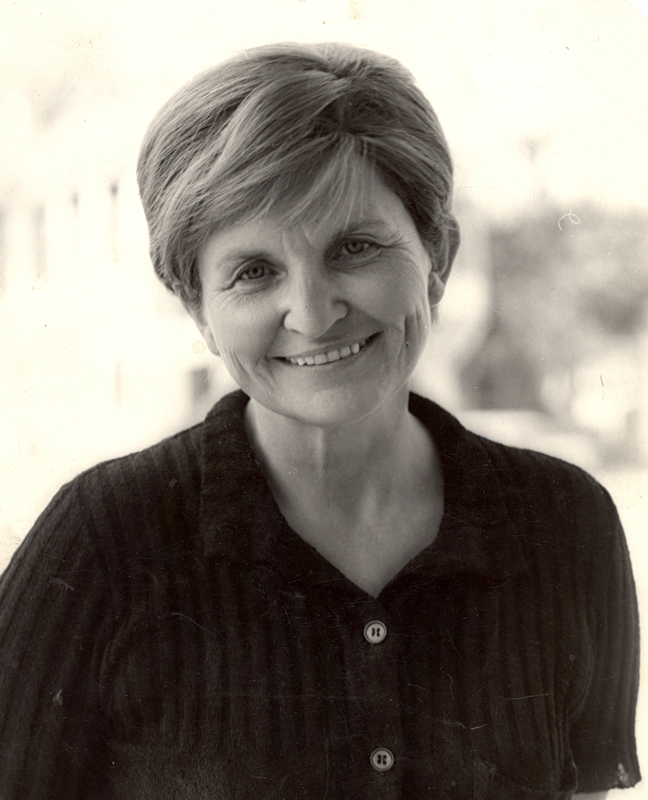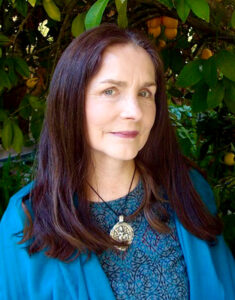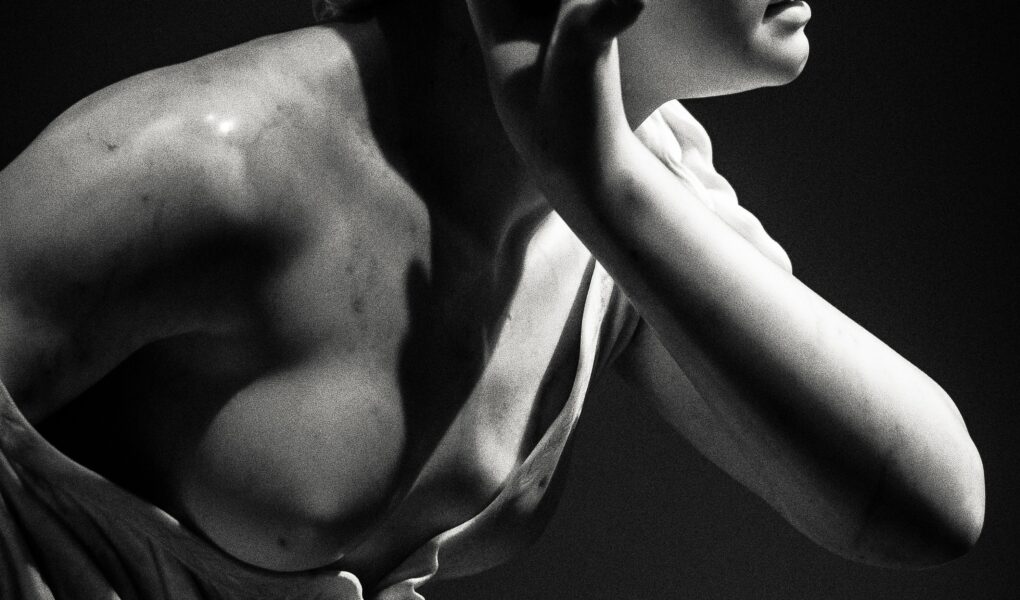Commemoration of Marija Gimbutas on her centenary in 2021
Author: Joan Marler
Many people wonder if there is evidence for the existence of matriarchal cultures. In this case Gimbutas’ scholarly research provides the evidence. This article provides an overview of the great archaeologist, who also celebrates her centenary this year. In her pioneering work, she linked various scientific disciplines. Also she uncovered the layer of an “Old Europe”. One that especially revered the goddess and life.
Lithuanian-American archaeologist Marija Gimbutas was born in Vilnius, Lithuania, in 1921. Her cultural background as a Lithuanian was linked to Vilnius and Kaunas. Following there is an overview of her professional life in the United States, discussing a selection of her major publications and the progressive development of her ideas about Old Europe as the original foundation of European civilization. This year Marija Gimbutasis honored by UNESCO as one of the outstanding individuals who formed the world. She “helped shape the civilization of which we are a part by helping cultures enrich each other to achieve universal understanding and peace.”
From early childhood, Marija was enchanted by Lithuanian lore. Back then she loved to run to her parents’ hospital to sit in the basement with the old women peeling potatoes and listen for hours to their traditional songs and stories. And she similyrily expected the village girls who took care of her at home to do the same. She learned that snakes revered as sacred. She learned to not harm them in any way. That it is Laima who writes the fate of people in the patterns of the hoop. That it is Saulė, the great sun goddess, who drives her glowing chariot across the sky. The villagers prayed to Saulė every day at sunrise and sunset, because all field work depended on the grace of the sun.
 Marija Gimbutienėat the time of the Prehistoric Seminar of the University of Tübingen, 1946.
Marija Gimbutienėat the time of the Prehistoric Seminar of the University of Tübingen, 1946.
The Earth was worshipped as Žemyna, the Great Mother. Euopeans worshipped her since ancient times; in gratitude for life they gave the Earth sacrifices.
Decades later, she recalled. “The old women used sickles and sang while they worked. The songs were very authentic, very old. At that moment I fell in love with what is ancient because it has a deep communication and oneness with the earth in it. This was captivating me completely. This was the beginning of my interest in folklore.”
In the summer of 1940, Marija and her fiancé Jurgis Gimbutas went on an ethnographic trip to the Dzukija area in southeastern Lithuania, where she wrote down the lyrics of the Dainos. These were traditional songs, sung by an old woman whose repertoire included more than 300 songs. At that time, there only lived a few women over all. Marija later described this as “the last bards of Lithuania. The most important transmitters of Lithuanian heritage from past times to the 20th century.” She felt the need to meet them and record this heritage, because these “great singers” were disappearing.
THE PREHISTORY OF EASTERN EUROPE (1956)
Peabody Museum, the American School of Prehistoric Research, published Marija Gimbutas’ monograph, The Prehistory of Eastern Europe, in 1956. To write this text in particular, she studied all excavation reports in their original language. From the Baltic to the Caucasus, on Mesolithic, Neolithic, and Copper Age cultures. She represented 100 years of excavations up to 1955. This comprehensive monograph presents the prehistory of Eastern Europe. This part has been inaccessible to Western scholars because of linguistic and political barriers. In her work, she introduced the term “Kurgan culture”. It’s a collective term she coined for “the mobile, warlike, pastoral, and patriarchal culture that inhabited the steppe zone north of the Black Sea and the Caucasus.”
Ancient Symbolism in Lithuanian Folk Art (1958).
While still a student at Harvard, Marija Gimbutas completed Ancient Symbolism in Lithuanian Folk Art (1958). This work she dedicated to her mother. Lithuanian folk symbolism traces back to the way of life of the first agrarian farmers. She recognized that the oral tradition of the villagers richly preserved it in through songs, stories. Also verbal as well as visual metaphors.
In this monograph, Gimbutas wrote. “Symbols in folk art … were elements of an ordered system.Not spontaneous, disconnected inspirations.” This insight later influenced her interpretations of the symbolism of the Neolithic societies of Old Europe. This book focuses primarily on the beautifully decorated wooden poles that were placed throughout the landscape.
They contained ancient symbols that expressed people’s belief in the sanctity of life.
As Gimbutas writes in her introduction, these Lithuanian monuments “rose from the earth, just as the folk song rose and the various customs rose, from religious beliefs that demanded shaping through artistic design.” In their view, these ancient symbols belong to a single religious system. One “that expresses the spirit of a people that drew its lifeblood from roots firmly planted in the earth.”
THE LANGUAGE OF THE GODDESS (1989).
In 1989, Marija Gimbutas published a book, The Language of the Goddess. There she stated. “I do not believe, as many archaeologists of this generation seem to believe, that we will never know the significance of prehistoric art and religion … [which] is very richly documented. The materials available for the study of ancient European symbols are as extensive as the neglect that was given to this study.”
She understood that people’s deeply held beliefs were the source of this ancient symbolism. It was their sacred concepts about the interconnected web of life and their place in it. It functioned for thousands of years as “a coherent and consistent ideological system.” She then explained the need to expand the boundaries of archaeological interpretation to include interdisciplinary research. Hence, she coined archaeomythology. This draws on comparative mythology, early historical sources, linguistics, folklore, historical ethnography, and other disciplines. By applying archaeomythology, Gimbutas began to identify the main themes of ancient European ideology. “Through the analysis of symbols and images and the discovery of their internal order.”
Marija Gimbutas described the celebration of life as the leitmotif of Old European ideology and art, in which there is no standstill.
 Venus von Willendorf, the Goddess of Europe
Venus von Willendorf, the Goddess of Europe
Images imbued with life energy move in spirals and serpentine forms on the rich pottery, with symbols transforming from one manifestation to another, From man to animal, from snake to tree, from womb to fish, from bucranium to butterfly. In the constant regeneration of life. In The Language of the Goddess, she writes, “Symbols are rarely abstract in any real sense. Their connections to nature remain and must be discovered through the study of context and associations.” In this way we can hope to decipher the mythic thought that is the raison d’être of this art and the basis of its form.”
Often people misunderstood her use of the term “goddess”. Indeed she defined it as the fertile, cosmogonic source of the cycles of life, death and renewal. Furthermore, “the goddess in all her manifestations was a symbol of the unity of all life in nature.
Her power was in the water and in the stone, in the tomb and in the cave. In animals and birds, snakes and fish, hills, trees and flowers.
Hence the holistic and mythopoetic perception of the sacredness and mystery of all that exists on earth.”
THE GODDESS OF ARCHEOLOGY
Marija Gimbutas sadly did not live to see recent developments in genetic research. However it is easy to imagine that she was pleased to learn that ancient DNA data confirmed her Kurgan theory. In this case the theory about the invasion of Old Europe by Proto-Indo-European tribes. Genetic hybridization between the newcomers from the steppes and the Old European peoples has been vividly documented by DNA analyses. Decades before this remarkable technology was available for archaeological analysis, Gimbutas wrote about it. “The clash of cultures”, which she described in terms of visible changes in burial patterns. Evidence of the imposition of elite male dominance over previously peaceful, matristic, egalitarian populations. The introduction of weapons of war, and the disruption of evolved Old European ways of life.
 Marija Gimbutas 1970, California
Marija Gimbutas 1970, California
Social, cultural, environmental, economic, and myriad other changes Gimbutas discussed in her long-term analysis of the complex processes that led to the end of Old Europe and the Indo-Europeanization of the continent. Marija Gimbutas was especially aware that the potential for knowledge is vast. She continously knew that what an individual can grasp and contribute in a lifetime is limited. She possessed a “humility in the face of evidence” that led her to constantly revise her own conclusions based on the most current data. Her work was a beginning, not an end. And she knew that many younger scientists would stand on her shoulders. Gimbutas’ former doctoral student and colleague, Ernestine Elster, writes.
“Marija Gimbutas was an innovator and trailblazer.The number of important ideas she put forward created the impetus and agenda for intensive exploration of these ideas and the publication of large volumes.”
Thus she leaves us with this admonition from “The Civilization of the Goddess”: we must realign our collective memory. This has never been more necessary as we find that the path of “progress” is wiping out the conditions of life on Earth.
 About the author
About the author
Joan Marler is director of the Institute of Archaeomythology, editor of The Civilization of the Goddess by Marija Gimbutas (1991), From the Realm of the Ancestors: An Anthology in Honor of Marija Gimbutas (1997), Journal of Archaeomythology, and other publications.
This article appeared originally on the German Homepage of Tattva Viveka: Das Leben der Göttin im alten Europa




